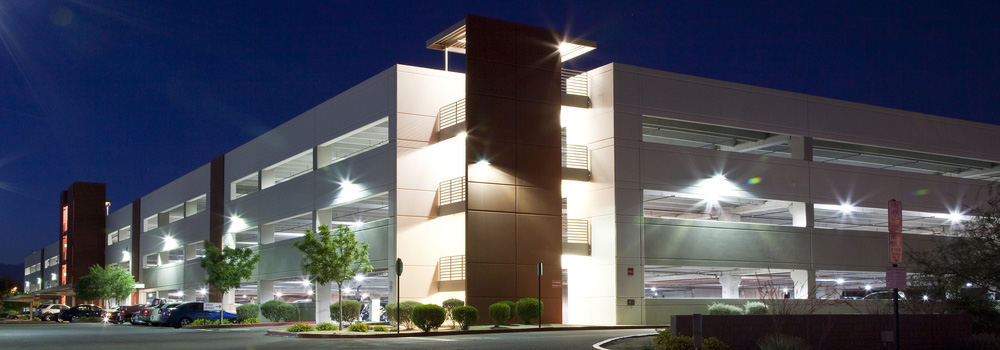From: Crain’s New York Business
By: Matthew Flamm and Daniel Geiger
Date: February 21, 2018
As head of Garage Management Co. for the past 30 years, Gordon Hamm has seen peaks and valleys in New York’s parking business. But he’s never seen anything like the past 18 months. Despite a healthy economy and record employment in a city that’s more crowded than ever, business at his company’s 57 garages is down across the board.—
And it’s not just Garage Management that’s suffering. Interviews with other parking industry leaders show a sector on the verge of a shakeup as operators struggle with rising labor costs and declining demand for a parking space for an evening, a day or just a couple of hours. The problem goes deeper than any swing in the economy. New Yorkers are changing how they get around. Parking operators have been hit by a one-two punch: more people using Lyft and Uber, which has slowed Manhattan traffic to a crawl and thus discouraged those with personal vehicles from driving into the city.
“The younger generation doesn’t have cars, and they don’t need them with the advent of Lyft and Uber,” Hamm said. “Everyone in the parking business right now is trying to get their own store in order.”
He and his fellow garage operators have looked into restructuring their leases with their landlords. “This is like the correction of the 2007 market crash,” he said. “It will test people.”
The trend has been building for a while, said transportation analyst Charles Komanoff, who considers congestion the main factor behind the drop in commercial parking revenue. He points to an annual survey by the New York Metropolitan Transportation Council that counted 720,000 cars entering the Manhattan central business district daily in 2016, a 5% drop from 2011. He calls that a significant decline, given that Manhattan job growth was nearly 14% during the same period, according to the state Department of Labor.
Business down, wages up
Unlike the vehicles in Midtown, that trend may now be accelerating. The past year and a half has seen a 10% slide in the number of “transient units”—cars that park by the day or hour—at Manhattan garages, according to the Metropolitan Parking Association, a trade group. Those cars make up the bulk of business at commercial parking lots.
Even worse, the decline has come as labor costs are rising. On Dec. 31 the minimum wage rose to $13 an hour for businesses with 11 or more employees—a 44% jump since 2016.
“That’s a bullet to the heart,” said Rafael Llopiz, president of the trade group. “We just can’t adjust to this type of change.”
Operators say the pressures can be seen across the country, or wherever Uber and Lyft have taken hold and added to congestion. Studies have shown that while taxis also contribute to traffic, e-hail operators are a more significant factor, as their fleets are not capped by regulations and can grow as large as the market will bear.
“It’s the same problem in Chicago, Boston, New York and other cities,” said Alan Lazowski, chief executive of Laz Parking, the nation’s second-largest parking operator, with 2,800 locations.
In New York, garage operators may face an additional danger from the most prominent proposed cure for traffic ills: a congestion-pricing plan that would charge vehicles to enter the city’s core. Gov. Andrew Cuomo is considering a proposal that would phase in fees over several years, eventually reaching $11.52 for personal vehicles entering Manhattan below 60th Street during prime working hours.
That would encourage more people to leave their cars at home, which is why the industry pooled its resources to help fight off a similar effort led by Mayor Michael Bloomberg in 2008. There would be “an immediate drop of about 12% in the number of motor vehicles entering the central business district on a typical weekday,” said Komanoff, who worked on a congestion-pricing plan for the advocacy group MoveNY. If the fees are used to improve mass transit, “the 12% would go as high as 20%,” he added.
The parking industry supports fees on for-hire vehicles, but is against the congestion-pricing approach the governor is considering.
“A blanket congestion-pricing plan is not a fair tax,” said Llopiz, pointing out that there are already levies on garage customers, including bridge and tunnel tolls and an 18% sales tax. That’s money the city will lose if it piles on another fee and discourages people from driving, he said.
Llopiz, former CEO of Manhattan-based parking- garage company Icon/Quik Park, and others would like to see garages given a role in cutting down on congestion. Noting that ride-hail vehicles in the central business district spend a third of their time unoccupied, industry leaders suggest that they wait inside garages instead of cruising.
“Parking has to be part of an ecosystem of intelligent transportation,” Lazowski said. “It’s possible for Uber drivers to hang out in garages and when they’re summoned, they leave from that facility. Uber and Lyft and other ride-hailing apps have a responsibility to be part of the solution to congestion.”
That suggestion is unlikely to fly. Even transportation experts who want less of Lyft and Uber in the city’s core say those vehicles must circulate to respond quickly to ride requests.
Komanoff believes operators would be better off pushing the city to charge higher rates for curbside parking and to crack down on the misuse of placards, which allow thousands of people with government connections to park on the street without paying.
Uber, which says most of its rides are outside of congested areas, insists it is working to ease traffic even beyond its support of congestion pricing. The company sees a dying parking-garage business as good for the city because it could prompt the garages’ redevelopment into necessary projects, such as affordable housing.
“Uber’s long-term goal is to end the reliance on personal vehicles and move to a mix of public transportation and services like Uber,” a spokeswoman said. “We are encouraged to see this trend continuing. Freeing up parking spaces and garages means more space for affordable housing, parks and other spaces that can benefit all New York City residents.”
In 2016 the city loosened or eliminated parking requirements in affordable-housing projects, a recognition of the fact that in neighborhoods with mass-transit options and low car ownership, building garages make little sense. (Most of Manhattan below 110th Street and Downtown Brooklyn already have no parking mandate.)
Transit advocates have pushed for ending parking construction mandates entirely. The Department of City Planning has reduced them in some neighborhoods and is taking transportation needs into account as it rezones.
Shifting gears
Though congestion may be the primary cause of the parking industry’s troubles, long-term trends expanding alternatives to car ownership are also working against the industry. Car-sharing service Car2go, which launched in Brooklyn in 2014 and branched out into Queens the following year, now has more than 84,000 members, up more than 60% from a year ago, with about 550 cars in its fleet. Rival ReachNow has 250 cars in Brooklyn, while Zipcar, the original car-sharing company, has more than 2,000 across the city.
Car2go is a free-floating service, meaning users locate a car on the street and leave it anywhere within a designated zone, whereas Zipcar users make a round trip. But both services have been found to depress car ownership in urban areas—by as much as a dozen vehicles for every one in use by the service. A small but meaningful percentage of users give up their own car or forgo the purchase of a new one, according to studies by the Transportation Sustainability Research Center at the University of California, Berkeley.
Some experts see the services becoming part of a network of options that would include Lyft, Uber, Via, Ford Chariot and even bike-share operators such as Citi Bike.
“What we’re seeing is more and more people putting together the pieces of mobility based on these choices that didn’t exist before,” said Susan Shaheen, co-director of the research center. “How is this going to affect the automobile market as well as the demand for parking in our cities?” She noted that some airports are already seeing sharp declines in parking proceeds—a key source of their revenue—as more customers use e-hails or public transportation. The shortfalls have been significant enough for one aviation consultant to write recently in a trade journal that if the trend continues or accelerates, it could “pose serious trouble to most modern airport financing models.”
Some architects and developers, in anticipation of the shift to autonomous vehicles—which experts say are more likely to be shared than privately owned—have begun future-proofing building designs so garages can be converted to other uses. Jeff Katz, CEO of real estate investment firm Sherwood Equities, has plans for a residential tower in Hudson Yards with a large parking garage in its basement. The space will have 14-foot ceilings, however, considerably higher than the 10-foot standard for garages, so that it could someday be turned into a retail property, a gym or a common area for residents.
Katz knows of the industry’s troubles: A parking operator in one of his buildings recently asked for a reduction in rent. But for now he feels a garage is still a good investment for a residential development.
“People are more inclined to buy if they have that amenity,” he said. “But we are also looking down the road 10 or 15 years. Maybe by then the parking business will be obliterated.”
A version of this article appears in the February 19, 2018, print issue of Crain’s New York Business as “Parking in reverse“.
Contact Us for More Information
"*" indicates required fields



